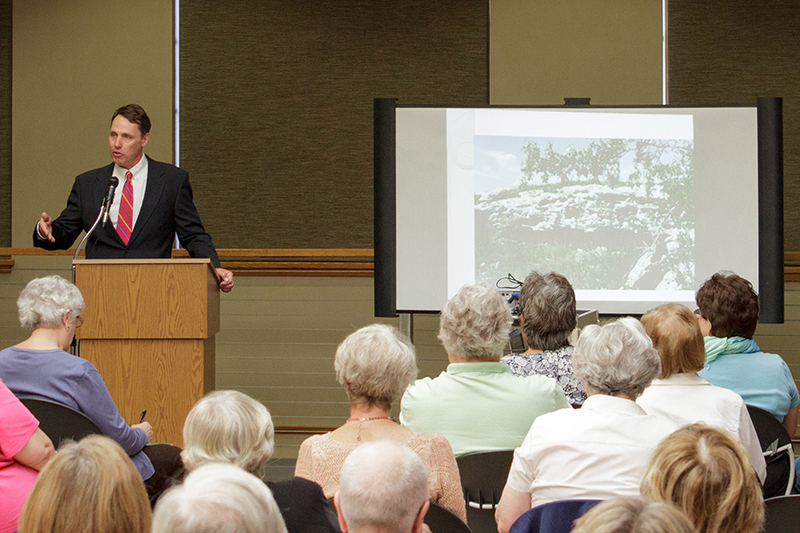Graves Lecture: 'Retired Roman soldiers had indoor plumbing 2,000 years ago'

Emona, a Roman city about the population of Chadron, was the topic of conversation Tuesday night during the second Graves Lecture of the semester.
Dr. Kurt Kinbacher, assistant professor of history, discussed the elements of place, space and indoor plumbing in the community now known as Ljubljana, Slovenia.
Emona is celebrating its 2,000th anniversary this year even though it was probably established earlier. Records dated 14 CE contain the first mention of the city, so residents designated 2014 the year of celebration.
Living in a planned, provincial community was a common reward for Roman military personnel who had served 20-25 years. Emona was home to those previously in the 8th and 15th legions.
“There were a lot of similar cities the same size. The residents served the purpose similar to that of our National Guard – a backup to the active military and keeping vandals out of the area – which was a valid concern,” Kinbacher said.
Excavation sites in Kinbacher’s slides taken on a June 2014 trip he took to the area show the remains of homes which had heated floors thanks to slave laborers stoking fires in the basements. Although they were not lavishly furnished or large homes, they were comfortable living places, according to Kinbacher.
The Romans were masters of organizing space which included rows of headstones lining the roads into towns with the names of the most wealthy and influential families on the largest stones.
“Through this practice, those entering the city knew right away who the prominent people were, which was apparently very important to them,” Kinbacher said.
As small as it was, Emona would be classified as an urban space, much as Chadron would be, Kinbacher said.
“Emona was built on a grid which would seem familiar to Chadronites. The main part of Emona would be about equal to the distance from our courthouse to the college. The population of 5,000 was all they could sustain considering the amount of human waste they had to deal with using the technology they had at the time,” he said.
Kinbacher said the 2,000-year-old plumbing pipes on display in museums in Ljubljana, Slovenia, are not vastly different from those in the current excavations near Main Street in Chadron.
Category: Campus News, Graves Lecture Series, Social Sciences
